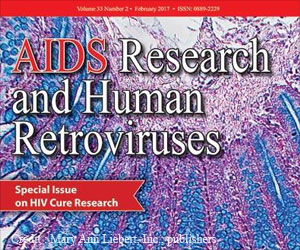- HIV remains a severe public health threat with over 40 million deaths and 38.4 million people living with HIV worldwide
- Challenges in developing an HIV vaccine include the virus's ability to change its shape, technological limitations, and the diversity of HIV subgroups
- While vaccine trials have faced setbacks, there is ongoing research on alternative approaches such as monoclonal antibodies, and efforts continue to develop a safe and effective HIV vaccine
HIV epidemic is far worse than thought
Go to source).
Why don't we have a vaccination despite the fact that research funding is available to combat the epidemic?
According to vaccine expert Anna Durbin, MD, "We're still trying to outwit the virus.”
"Its mysterious, ever-changing nature renders conventional vaccine development strategies ineffective. And a rising number of persons at risk of contracting HIV think that thanks to preventive treatments like PrEP and post-infection antiretroviral therapy, HIV is no longer a major concern, much alone a death sentence.”
But Durbin, an international health expert, is undeterred. She claims that while there will be no HIV vaccine by 2030, the year set by the UN Sustainable Development Goals to end the AIDS epidemic, PrEP (pre-exposure prophylaxis) and novel monoclonal antibody medicines may provide a bridge until a vaccine is developed.
Durbin explores the challenges of generating an HIV vaccine and how it might be implemented once one is developed.
HIV: A Virus that Changes its Shape
Most vaccines cause our bodies to produce antibodies to fight various diseases, but HIV disguises itself so well that even if we do produce antibodies, the virus alters to avoid them.Early vaccination candidates targeted the envelope protein, which encases the virus genome. When we discovered that antibodies against the envelope protein were ineffective, we reasoned that perhaps we could target various portions of the virus that activate T cells, which kill infected cells.
However, because the virus integrates itself into the host genome, T cells failed to recognize the viruses as distinct from the hosts (2✔ ✔Trusted Source
HIV/AIDS Vaccines: How long must humanity wait?
Go to source).
Current Technological Limitations
Because the virus integrates into host DNA, the vaccination platforms available to us are limited.We've historically used live attenuated vaccines for viral infections like measles, mumps, and rubella, but we can't use them for HIV because the virus may integrate into the host cell’s DNA and can cause sickness.
There are also numerous HIV subgroups or clades. A vaccination developed against clade A may not be effective against clades B or C.
One issue with mRNA vaccine technology [used for the COVID-19 vaccinations] is that the amount of mRNA in a vaccine is limited.
The vaccination for COVID includes mRNA for the production of one viral protein, the spike protein. We don't know how many proteins can be expressed in a single vaccination using this mRNA technique, which may be a limitation for HIV vaccines (3✔ ✔Trusted Source
COVID-19 vaccine platforms: Delivering on a promise?
Go to source).
The Landscape of the Vaccine Trial
More than 250 HIV vaccine trials have been conducted, most of which have been preliminary in nature, to determine whether the vaccine is safe and whether humans mount an immune response following inoculation.There have only been about ten vaccine trials that have progressed to the point of looking at efficacy. At 42 months, one of them had 31% efficacy.
That was the most promising trial, however, the efficacy dropped soon, and it was just 31% against clade B. It is unclear whether this would apply to the other clades.
Unfortunately, we will not have a vaccine by 2030, but there is still a lot of funding available for HIV vaccine development. The excitement has waned as a result of the failures, but there is still a lot of work being done to produce a safe and effective HIV vaccine.
If we had a vaccine that showed great promise in efficacy trials, there would be a ton of funding around it (4✔ ✔Trusted Source
Passive immunization and its rebirth in the era of the COVID-19 pandemic
Go to source).
Another Major HIV Vaccine Trial Fails
Researchers reported earlier this year that the only HIV vaccine in a late-stage study had failed, striking a severe blow to the fight to manage the global HIV epidemic and adding to a decades-long list of unsuccessful attempts.The Mosaico study was the result of a public-private partnership between the US government and pharmaceutical company Janssen.
It began operations in 2019 in eight countries in Europe and the Americas, including the United States. Researchers enlisted over 3,900 males who have had intercourse with men and transgender people, all of whom were assessed to be at high risk of HIV.
Monoclonal Antibody Treatment's Promise
The NIH's Vaccine Research Centre (VRC) has developed a passive immunization approach called monoclonal antibodies. Passive immunity occurs when people are given antibodies to a disease rather than creating them themselves.The VRC discovered that certain patients who had been infected with HIV for a long time possessed highly effective, widely neutralizing antibodies that recognized a wide range of HIV strains and clades.
They extracted those widely neutralizing antibodies, sequenced them, synthesized them, and tested them to determine if they could prevent infection.
That has been really encouraging. The issue is that you must continue to give patients the monoclonal antibody to preserve immunity.
Even if you have one that is really long-lasting, say six months, you still have to administer it antibody every six months or so.
They are currently working on developing a vaccination that will cause the body to manufacture these highly neutralizing, broadly active antibodies. We simply haven't located the proper sequence to include in the vaccination (4✔ ✔Trusted Source
Passive immunization and its rebirth in the era of the COVID-19 pandemic
Go to source).
The Puzzle of Prevention
One of the reasons for the high level of financing for PrEP is the lack of a vaccine. PrEP is one of the few options for preventing HIV infection.We're still waiting for extensive efficacy results on monoclonal antibodies, a type of PrEP. If those are demonstrated to be highly effective, at least in high-income nations, they will become the prevention method (5✔ ✔Trusted Source
Combining biomedical preventions for HIV: Vaccines with pre-exposure prophylaxis, microbicides or other HIV preventions
Go to source).
Considering an HIV Vaccine Rollout
As with every vaccination, there would be a trial, a scale-up, and a launch. Before there is enough vaccination for everyone, it will be tailored to those who are most in danger. As more vaccine becomes available, they will be included in routine immunization, similar to hepatitis B vaccines.These immunizations will not be administered to children for the first time. For a variety of reasons, they will be well down the line. We'll be watching for sustained safety and efficacy durability, as these factors will influence when the first immunization should take place. Vaccinating from birth, for example, makes little sense if the efficacy lasts five years.
I believe the recommended for the initial rollout would be 15 and up. To maximize the benefit, they should be vaccinated before becoming sexually active.
If you stated, "You can prevent getting HIV by getting vaccinated," most individuals who believe they are at risk would get vaccinated.
Early on, there would most likely be no upper age limit because HIV may infect anyone at any age.
HIV Prevention for Everyone
With a few exceptions, most countries would embrace an effective HIV vaccine.The goal would be to develop such vaccination to the point that low- and middle-income countries can afford it, with access being the most difficult challenge (6✔ ✔Trusted Source
We Cannot Win the Access to Medicines Struggle Using the Same Thinking That Causes the Chronic Access Crisis
Go to source).
References:
- HIV epidemic is far worse than thought - (https://pubmed.ncbi.nlm.nih.gov/9420485/)
- HIV/AIDS Vaccines: How long must humanity wait? - (https://pubmed.ncbi.nlm.nih.gov/21748103/)
- COVID-19 vaccine platforms: Delivering on a promise? - (https://pubmed.ncbi.nlm.nih.gov/34033528/)
- Passive immunization and its rebirth in the era of the COVID-19 pandemic - (https://pubmed.ncbi.nlm.nih.gov/33400975/)
- Combining biomedical preventions for HIV: Vaccines with pre-exposure prophylaxis, microbicides or other HIV preventions - (https://pubmed.ncbi.nlm.nih.gov/27679928/)
- We Cannot Win the Access to Medicines Struggle Using the Same Thinking That Causes the Chronic Access Crisis - (https://pubmed.ncbi.nlm.nih.gov/34194206/)
Source-Medindia
















